Basic QC Practices
The 2021 African QC Survey Results
The Global QC Survey of 2021 collected responses Africa, revealing significant differences in the laboratories of the developing world.
The 2021 African QC Survey Results
Sten Westgard, MS
December 2021
[This survey was completed with the support and partnership of Technopath Clinical Diagnostics.]
- The Top Ten Findings of the 2021 Global QC Survey
- The 2021 Global QC Survey
- The 2021 US QC Survey Results
- The 2021 Asia QC Survey Results
- The 2021 Middle-East QC Survey Results
- The 2021 Latin and South America QC Survey Results
- The 2021 European QC Survey Results
The demographics
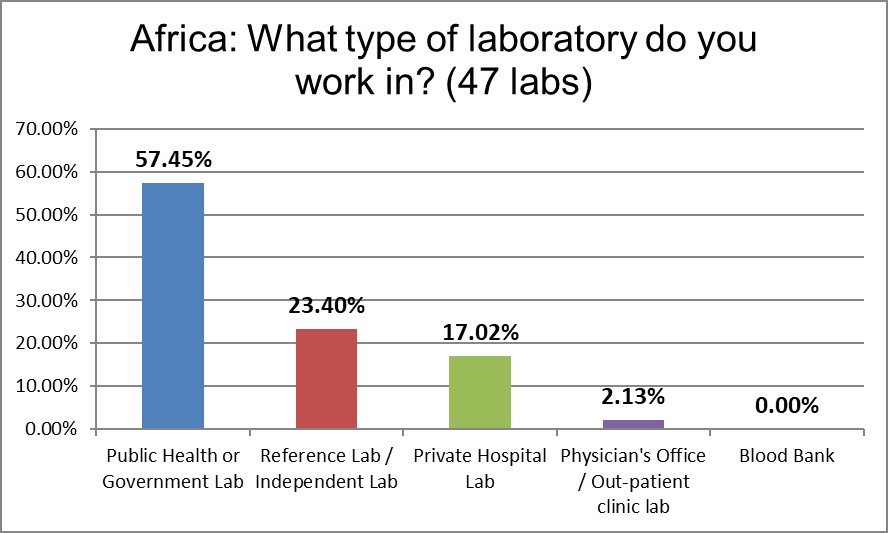
Public hospitals dominated our African respondents.
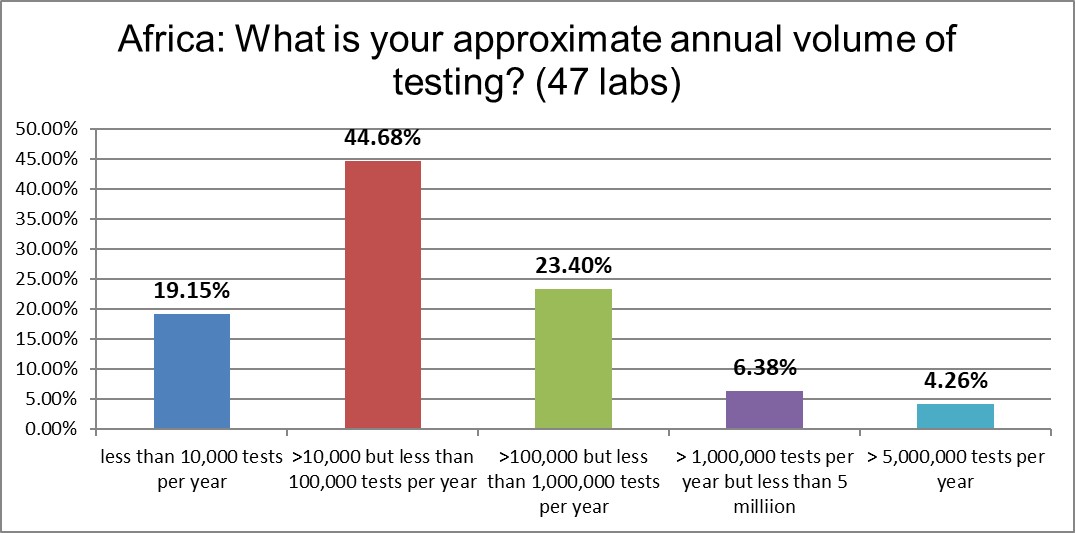
Smaller labs dominated the responses of this region. Almost no very large and mega-labs.
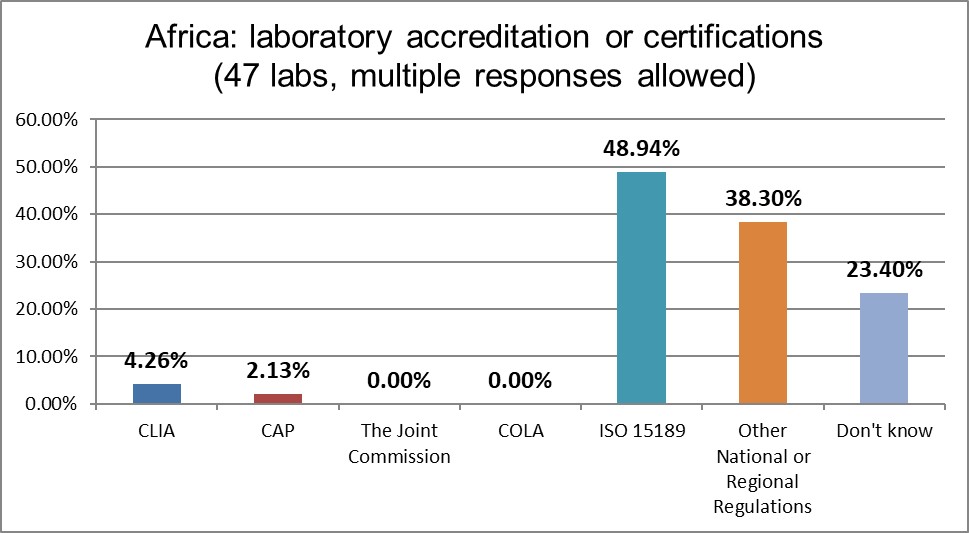
ISO 15189 and other local regulations are the strongest determining factor, while CLIA and CAP has very, very limited impact.
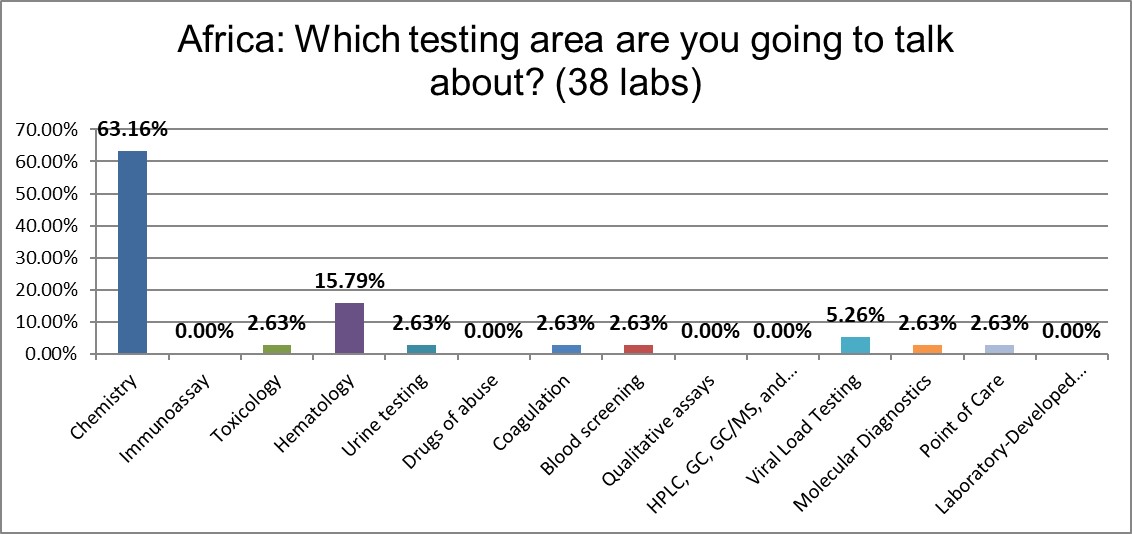
The respondents focused most on the QC performed in their biochemistry testing.
Now, how do these labs practice QC?
The QC Set Up
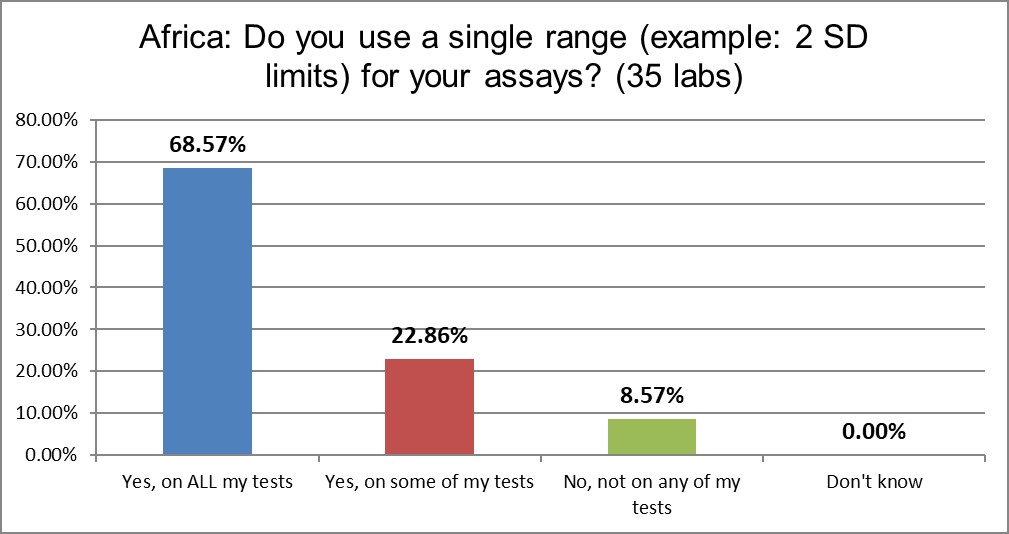
Two-thirds of labs are using 2 SD limits in Africa. This is higher than the global average.
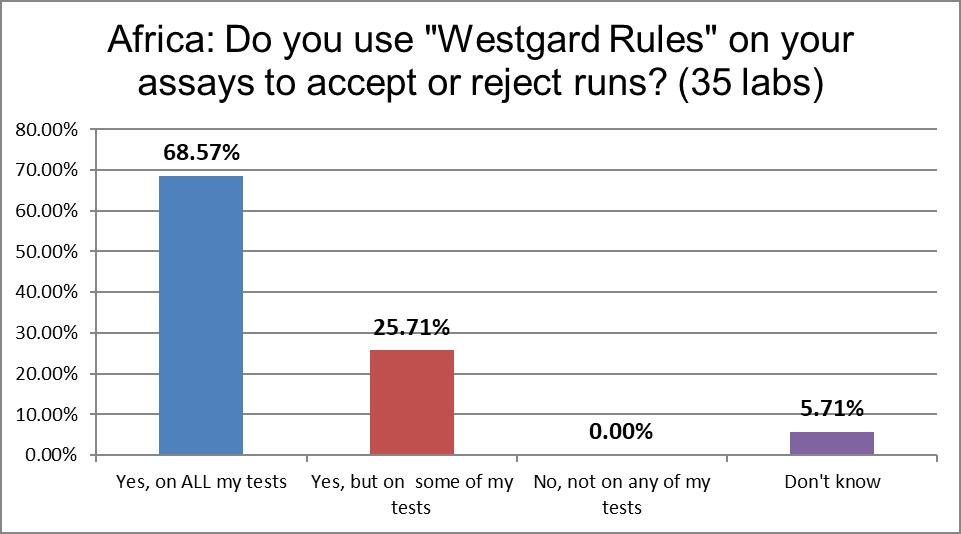
Over 90% of the laboratories from this region use "Westgard Rules" on some or all of their tests. There are no labs that don't use Westgard Rules somewhere. This is a higher rate than the US.
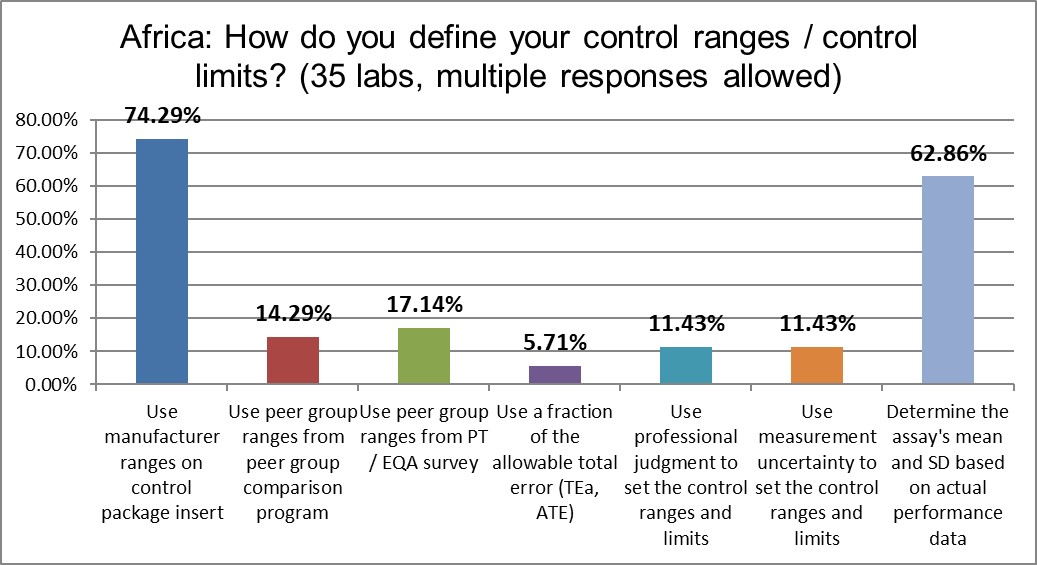
Nearly two-thirds of laboratories in Africa establish their own mean and SD. Nearly three-quarters use manufacturer ranges, which is a global high. All other practices are very low.
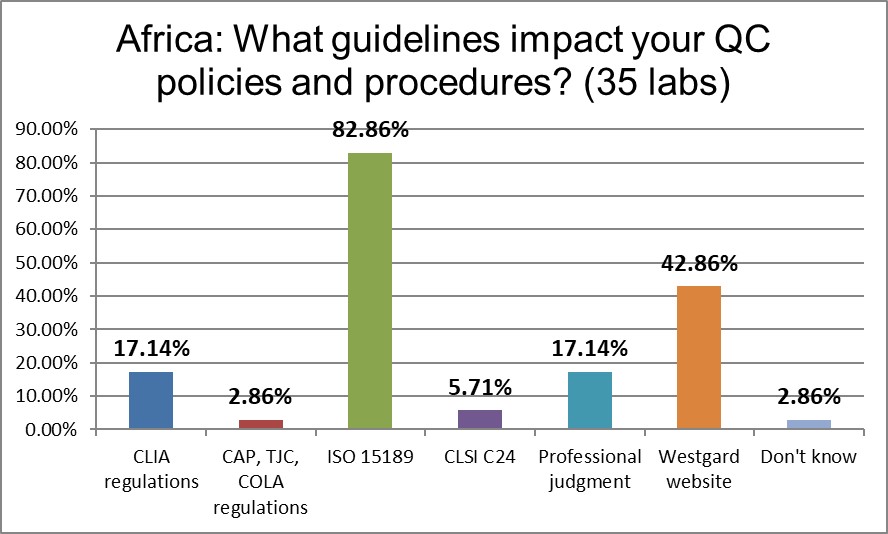
Africa has a huge reliance on ISO 15189, the global standard for quality. Very little else influences their control charts.
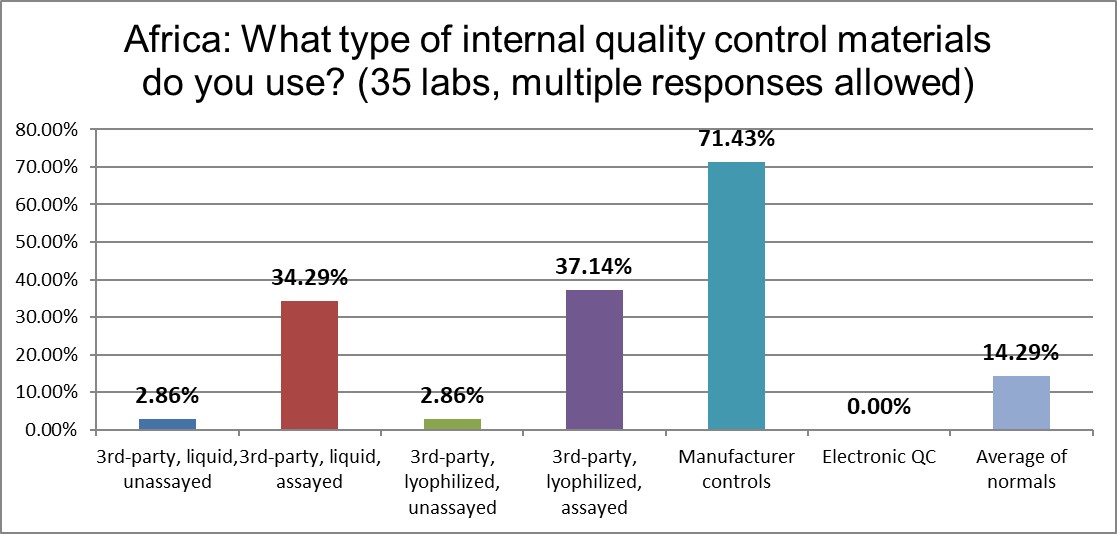
The use of manufacturer controls are extremely high. Independent controls, which represent an additional expense, are used much lower than seen elsewhere in the world. Assayed controls are surprisingly popular. It's not surprising to see lyophilized controls more popular than liquid controls, but not by much.
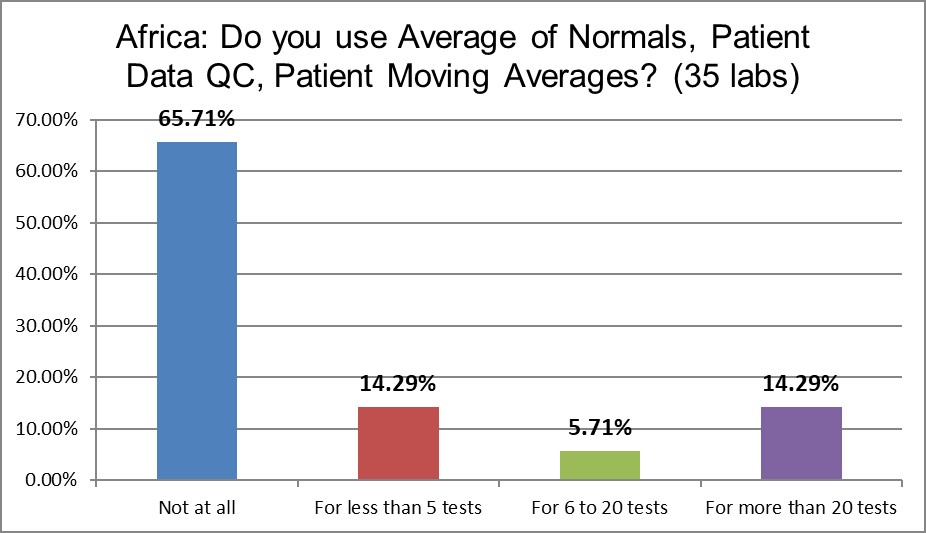
Nearly two-thirds of laboratories use no patient data techniques at all. However, given the difficulty in implementing these techniques, it's impressive to see that over 30% of labs use some amount of PBRTQC. There is 13% more use of these patient data techniques in Africa than in the US!
The Real Practice of Running Controls
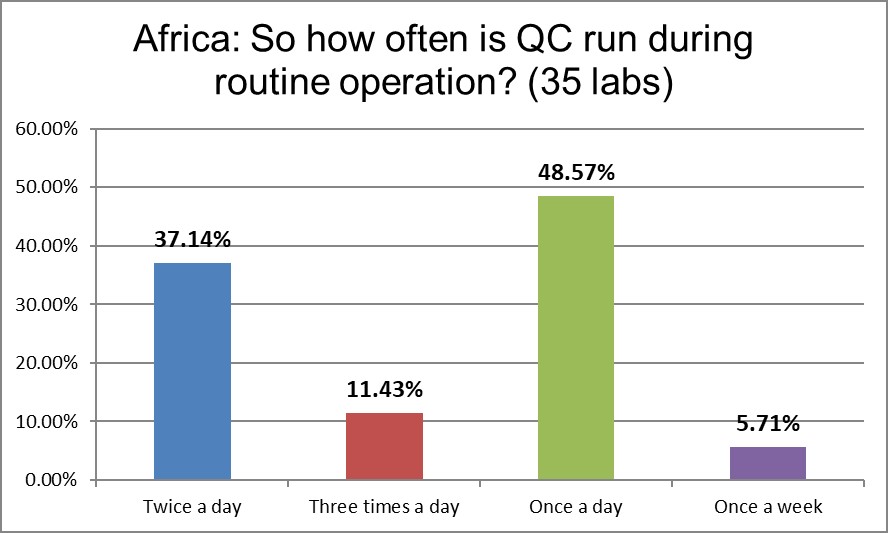
Once-a-day QC is practices by almost half the labs in Africa, with a surprising high rate of running QC twice a day. The rate of African labs running twice a day is twice the rate of the US.
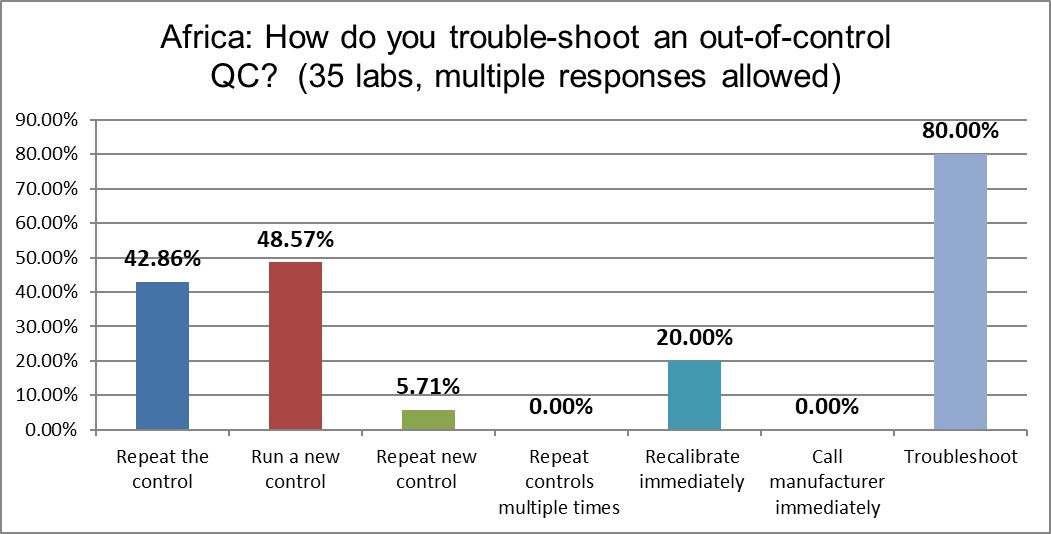
Laboratories in this region troubleshoot and seek root cause (as well as recalibrate) at the same rate as we see in the US. However, they repeat the control at half the rate of the US! And they run new controls significantly less often than the US. They do, however, recalibrate at significantly higher rates.
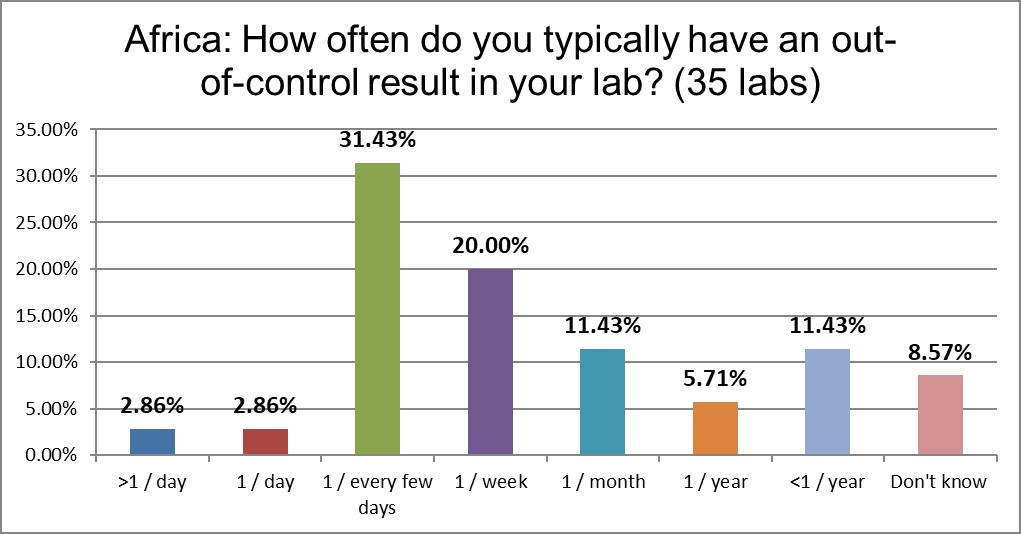
Labs in Africa report daily errors at one-sixth the rate of the US. On a given week, labs in Africa are reporting 20% fewer errors than in the US. Does this mean labs in Africa are missing errors, or labs in the US are finding errors that don't exist?
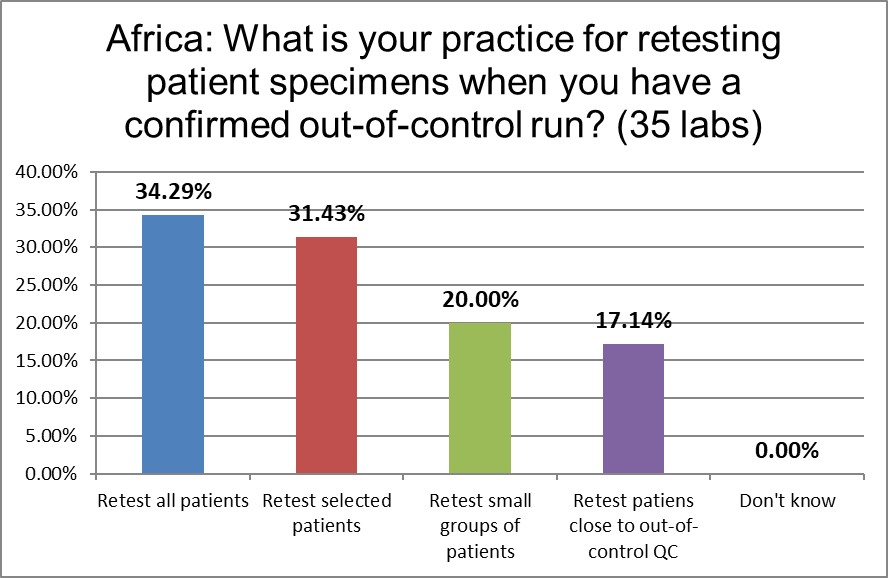
The retesting rate of all patients is very similar to the US. However, labs in Africa are twice as likely to test selected group of patients (abnormals) than in the US.
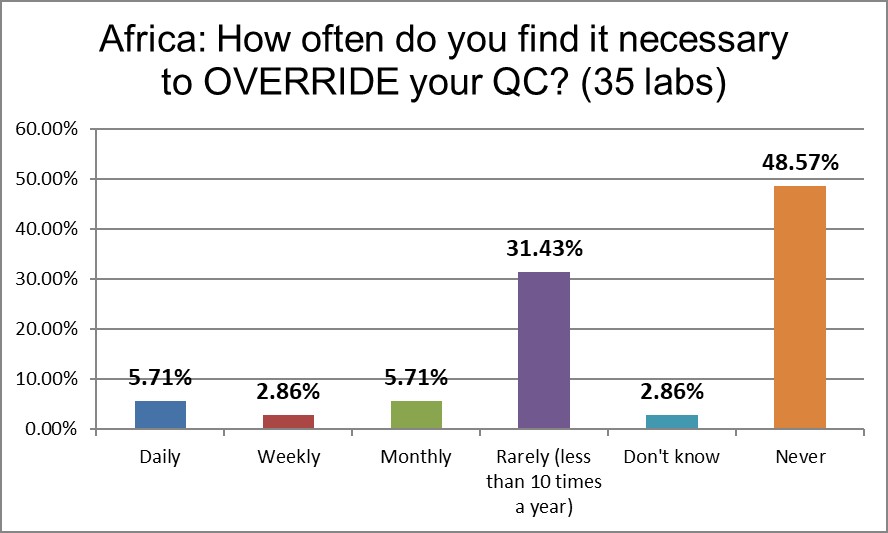
Labs in Africa are four times more likely to override their QC on a regular basis than the US. That's still less than what we've seen in Latin and South America.
The Final Overview
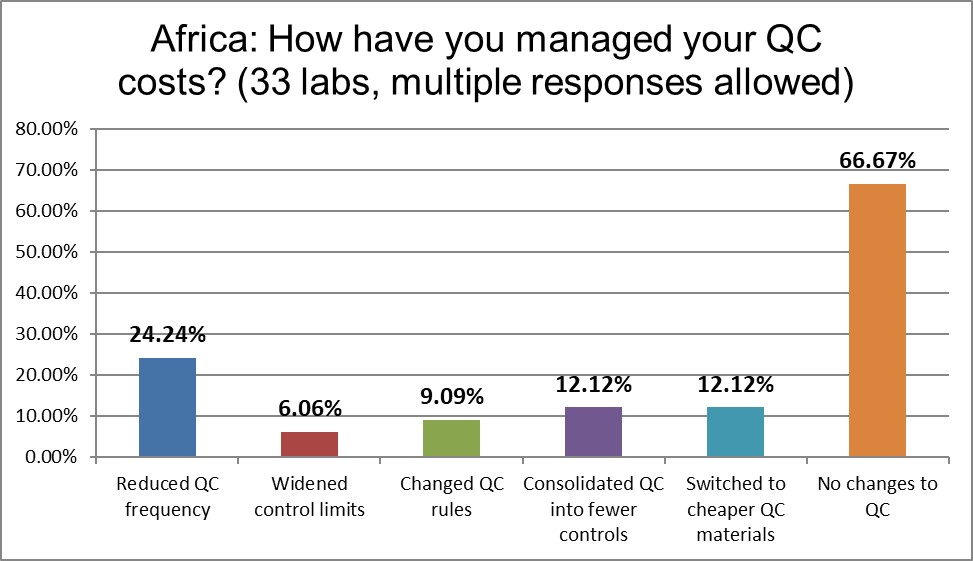
Labs in Africa have reduced their QC frequency at nearly three times the rate in the US. They are almost three times more likely to have switched to cheaper controls. But two-thirds have done nothing to their QC practices that manages their costs.
Overall, there are lot of practices in this region that are better than what we see in the US. It is a pleasing surprise to see that there are a strong set of optimal QC practices in place in this region.
